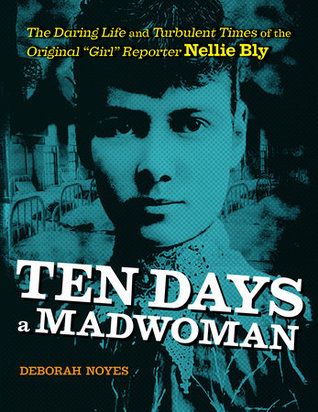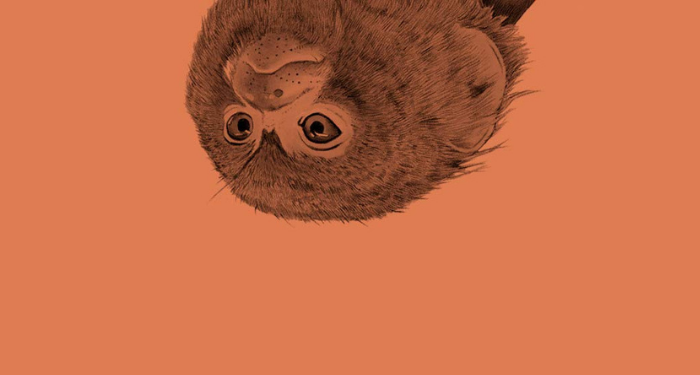Celebrities in general, and authors in particular, have long been known for their pets. Hemingway famously had cats. Lord Byron, when told he would not be allowed to bring his dogs to Trinity College, acquired (through means better not questioned) a “tame” bear. Flannery O’Conner kept peacocks, Charles Dickens had a pet raven that may have inspired Edgar Allan Poe. John Steinbeck had Charley. Stephen King, of course, has Molly, The Thing of Evil (actually a very cute and by all accounts non-evil corgi). Shirley Jackson had around a dozen cats, all black, allegedly so she might claim to only have two or three when her husband inquired. But one absolutely unsuitable pet keeps showing up in author biographies: monkeys.
The best headline ever written was on December 9, 2011, in The Globe and Mail: “Stylish but illegal monkey found roaming Toronto IKEA.” The article is now behind a paywall, but the story was also published in Smithsonian Magazine the following day, with a nearly identical headline. In short, an 8-month-old rhesus macaque was found in the parking lot of a Toronto IKEA wearing a shearling coat. Local animal services seized the monkey and fined its owner for illegal possession; multiple parody Twitter accounts sprang up; and everyone was left wondering what on earth had led to this moment. (I am not sure we ever found out to our satisfaction. Someone bought an illegal monkey and dressed him stylishly. They went to IKEA. The monkey escaped. The end.)
Because I know you’re wondering, his name is Darwin and he was brought to a sanctuary where other monkeys could teach him how to be a monkey, since he had been taken from his mother far too young. But Darwin isn’t the monkey I’m here to talk about. The story is related, though! Because what I want to talk about is pet monkeys in general, and celebrity pet monkeys in particular. What kind of celebrities? Authors, of course!
While pet monkeys are still common today, despite being terrible pets (they are wild animals!), the trend seems to have begun in the mid-19th century. I suspected it was probably because of colonialism, and of course it (probably) was.
There are no monkeys indigenous to Europe or to North America; the majority are from Africa, South America, and Asia (particularly Southeast and South Asia), because those regions have the jungle climate where monkeys thrive. It is certainly possible that writers from those regions have kept pet monkeys historically, or even do so now, but my curiosity is more about the western writers (mostly white, mostly British and American) who kept pet monkeys under non-ideal and somewhat mysterious circumstances.
A Very (Very) Brief History of Indian Colonization
(Please note that this is extremely not my area of expertise, and I am doing my best to be accurate but may have made some mistakes.)
While India is far from the only place monkeys come from, it is the first country I looked into, due to my first experience with a (fictional) pet monkey being in A Little Princess, when Ram Dass retrieves his naughty escaped monkey from Sara’s attic rooms and tells his wealthy employer about her living conditions. This chance meeting is a crucial plot element in the book, and of course child-me was charmed by the idea of a pet monkey.
In 1498, nearly 400 years before the Suez Canal was dug, Vasco de Gamba of Portugal found an oceanic route to India around the Cape of Good Hope (Africa), and European trade with India was renewed. (It is unclear to me whether there was land trade between the dissolving of the Roman empire and this trade agreement.) By the early 17th century, trade had also been established by England, France, Denmark-Norway, and Netherlands (then Dutch Republic), all of which apparently squabbled over control of access to the spices and other goods they wanted from India.
By the 18th century, the Mughal Empire was over and the Maratha Empire was weakened by the battles of Panipat; these troubles within India opened them up to manipulation by European forces, which were all too happy to provide it. Great Britain and France fought for dominance, and around 1799, Britain came out on top. They gained nearly full control over India by the mid-19th century. India would not gain independence from Britain until 1947, when it was partitioned into India and Pakistan.
So we have about 100 years of British control over India, during which time several British children’s stories involved pet monkeys and quite a few authors actually had pet monkeys. (Of course, Britain controlled many, many other countries during this time, a lot of which are also home to indigenous monkeys. India is an example, not the whole story.) Historical author Mimi Matthews wrote a wonderful breakdown of the prevalence of pet monkeys in 19th century literature, including why so many were named variations on Jack.
But Back to Authors and Pet Monkeys
Who are these authors I keep referencing? I will leave you with a short reading list of books about authors and/or their monkeys. Please note that I only came across instances of white authors with pet monkeys; perhaps non-white folks have better sense than to keep a wild animal as a pet, or perhaps there were simply not as many non-white authors being published in the 19th and early 20th centuries (probably it’s both).

Ten Days a Madwoman by Deborah Noyes
This biography of Nellie Bly of course covers her time undercover in a mental hospital, but it also mentions the monkey she was given as a gift and traveled with, perhaps at least partly unwillingly.
Mitz by Sigrid Nunez
This is historical fiction about Virginia Woolf’s pet marmoset, Mitz. Yes, really. There is a wonderful interview with author Sigrid Nunez at Electric Lit in which she talks about her reasons for writing the book, and the way she modeled it in part after Woolf’s book Flush, about Elizabeth Barrett Browning’s cocker spaniel.
Woo, the Monkey Who Inspired Emily Carr by Grant Hayter-Menzies
Canadian artist and writer Emily Carr, whose work was deeply influenced by the Indigenous people of Turtle Island, was deeply attached to her monkey, Woo, but ultimately unable to care for her. Biographer Hayter-Menzies compassionately delves into their bond while also discussing the ethics of wild animals in captivity.

The Golden Thread by Ravi Somaiya
This is a book about the mysterious death of Swedish diplomat and United Nations Secretary General Dag Hammarskjöld, who was murdered at the height of the Cold War. Author Somaiya, an investigative journalist, covers both his life and his death — and his life included a pet monkey.
There are, according to the internet, seven types of monkeys commonly kept as pets. But one thing is the same no matter the species: monkeys are not a good choice for an animal companion. (But perhaps you’d like to see a photograph of Joan Collins with her pet monkey. No one would blame you!)
